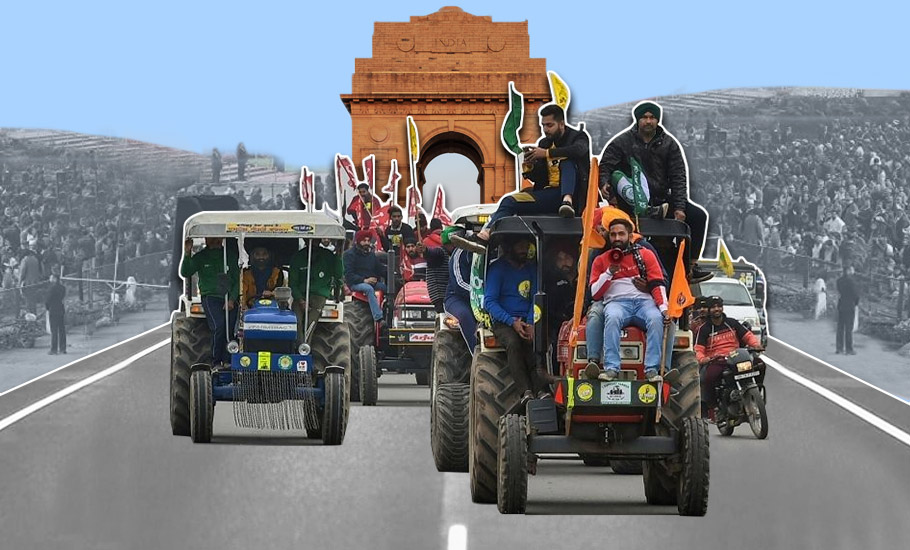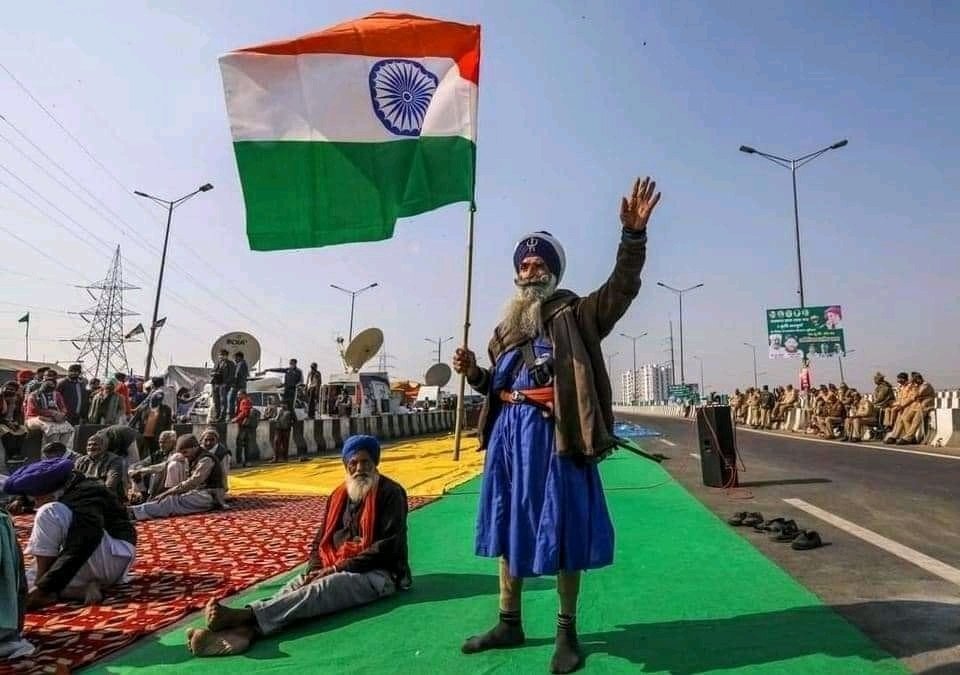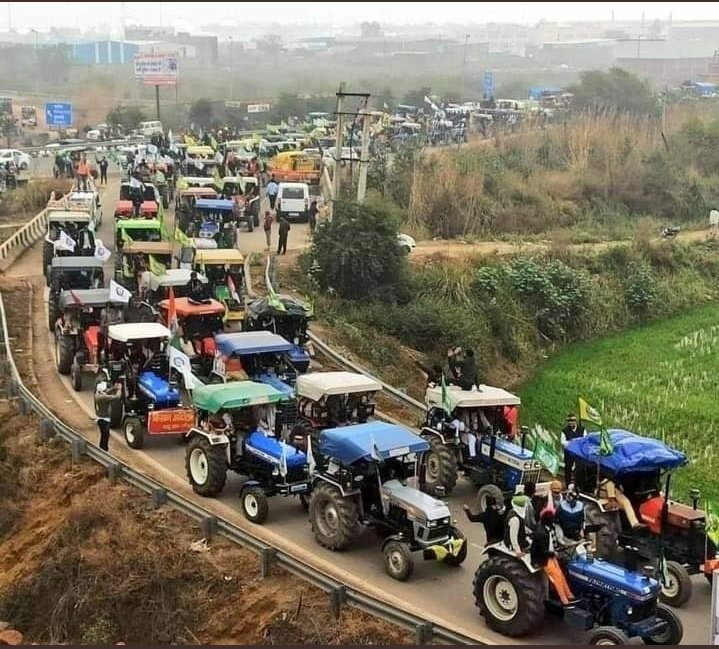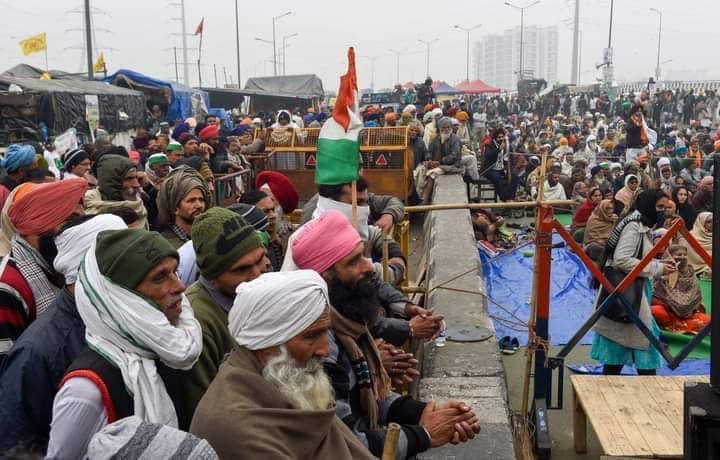
- Home
- News
- Analysis
- States
- Perspective
- Videos
- Education
- Entertainment
- Elections
- World Cup 2023
- Features
- Health
- Business
- Series
- Economy Series
- Earth Day
- Kashmir’s Frozen Turbulence
- India@75
- The legend of Ramjanmabhoomi
- Liberalisation@30
- How to tame a dragon
- Celebrating biodiversity
- Farm Matters
- 50 days of solitude
- Bringing Migrants Home
- Budget 2020
- Jharkhand Votes
- The Federal Investigates
- The Federal Impact
- Vanishing Sand
- Gandhi @ 150
- Andhra Today
- Field report
- Operation Gulmarg
- Pandemic @1 Mn in India
- The Federal Year-End
- The Zero Year
- Premium
- Science
- Brand studio
- Home
- NewsNews
- Analysis
- StatesStates
- PerspectivePerspective
- VideosVideos
- Entertainment
- ElectionsElections
- Sports
- Loading...
Sports - Features
- BusinessBusiness
- Premium
- Loading...
Premium

Jaya, jaya he: This 26 January, public is reclaiming the Republic

This 26th January, the public is fittingly taking charge of the Republic. The proposed tractor rally by farmers on the outskirts of Delhi in support of their demand for repealing farm laws will reiterate a lesson that was forgotten through decades of misrepresentation: the Republic is owned by the public, and the Republic Day is a celebration of people-power. This precept of democracy was...
This 26th January, the public is fittingly taking charge of the Republic.
The proposed tractor rally by farmers on the outskirts of Delhi in support of their demand for repealing farm laws will reiterate a lesson that was forgotten through decades of misrepresentation: the Republic is owned by the public, and the Republic Day is a celebration of people-power.
This precept of democracy was first distorted and then inverted over the years to turn R-Day into a celebration of the government’s power, both military and administrative, and the people were reduced to mere spectators of this parodic razzmatazz that bored almost everyone to sleep. With a bit of luck and pluck, the narrative might change this year.
And, it is about time. For, today India needs more than ever in its history that real power be restored to people, and taken away from the government and its auxiliary institutions.
Republic’s tryst with destiny
Compared to some of the countries in our neighbourhood, India has been fortunate since Independence in being able to largely uphold its Constitutional and democratic values.
During these years, its system of checks and balances, the morality dictated by the Constitution and the power of public dissent have ensured that India does not veer too far from its founding principles.
In spite of many provocations, the masses have largely protested within the framework of the Constitution, followed the fiat of law and eschewed unlawful uprisings. Even in states riven by separatist movements, the popular mood has always favoured expression of anger through lawful protests. As a result, India has been able to find peaceful resolution even to complex problems, such as the Khalistan movement and dissent in many parts of the Northeast primarily through the process of parleys and pacts. Kashmir has been an outlier. But the story of Kashmir is a complex.
The governments, on their part, did not turn rogue or undermine established democratic processes, like in most countries in Asia. The one aberration, of course, was the era of Emergency. But that assault too was a lesser challenge due to our inherited fightback mechanisms—a fierce opposition, pockets of journalistic defiance and non-pliant (largely) judiciary—compared to the threats arising now.
In essence, so far we have been fortunate to be part of a system where most conflicts were resolved through democratic processes of discussion, debate, bargain, give-and-take, or through expression of dissent via polls.

But, all these mechanisms are now being sabotaged from within, mainly by the government and its pliant institutions.
The problem with India today is that its constitutional, institutional, political and public moralities are all under attack. Every trait that defined India, at least in spirit, is being discarded and replaced by systemic immorality.
Weaponisation of religion
To begin with, the government now has a preferred religious identity and, thus, is a threat to the plural, syncretic culture of the country. Two recent events in this context need deconstruction.
One, the Prime Minister’s presence at a ceremony to lay the foundation of a Ram Temple on a contested site in Ayodhya. Two, the President’s public contribution to the under-construction temple. Both these crude displays of government’s predilection for a religion are antithetical to the Constitution.
Several decades ago, Prime Minister Jawaharlal Nehru refused to grant the state’s imprimatur to reconstruction of the Somnath Temple, calling it unethical for a secular government. In 1951, when President Rajendra Prasad decided to inaugurate the temple, a distressed Nehru wrote to chief ministers:
“It should be clearly understood that this function is not governmental and the GoI has nothing to do with it… We must not do anything that comes in the way of our state being secular. This is the basis of the Constitution and governments, therefore, should refrain from associating themselves with anything that tends to affect the secular character of our State.”
Nehru was aware that in a diverse country, the state’s adoption of religious motifs and symbols, the PM’s posturing as the temporal and spiritual head of a secular country will impact India’s destiny in a tragic manner. He realised that building shrines is not the mandate for the government of a modern, liberal and religion-less government. He considered it both unethical and unconstitutional. But his morality has now been turned on its head.
A government that weaponises religion will always be at conflict with its people, especially if their history and culture are steeped in diversity. Failed country after country has taught us this lesson. The Donald Trump era in the US, with its ugly finale that unfolded at the Capitol, has underlined the dangers of the government’s dalliance with identity politics. But India, whose government is becoming more and more keen on becoming majoritarian, has so far ignored this threat.

The other tragic consequence of weaponisation of religion is that once the process begins, even icons that stand for morality, leaders who disdained sectoral identities can be appropriated for the ugly cause.
The BJP’s burning desire to turn Netaji Subhas Chandra Bose into a Hindutva icon, and Jai Shree Ram into a war-cry for political gains in Bengal manifests this malaise. Countries that have their histories rewritten for petty gains, icons turned into cheap political weapons run out of real heroes and idols in the long run; they are replaced with their perversions. This re-branding is a cultural and ideological threat that targets critical thinking and intellect of generations to come and populates the country with bigoted, dumb bots, turning a nation into a Matrix-like place where someone has altered the reality.
Assault on dissent
But where are the Neos to break this Matrix? Unfortunately, they are being silenced or crushed by the government and its Agent Smiths.
In his final speech to the Constituent Assembly, BR Ambedkar underlined the value of dissent and debate in nation-building. He said:
“The proceedings of this Constituent Assembly would have been very dull if all members had yielded to the rule of party discipline. Party discipline, in all its rigidity, would have converted this Assembly into a gathering of yes men,” he said.
Fortunately, there were rebels, said Ambedkar, reeling out a galaxy of names. “That I was not prepared to accept their suggestions does not diminish the value of their suggestions nor lessen the service they have rendered to the Assembly in enlivening its proceedings. I am grateful to them. But for them, I would not have had the opportunity which I got for expounding the principles underlying the Constitution which was more important than the mere mechanical work of passing the Constitution.”
We are now in an India where dissent is either discredited as anti-national, or outlawed and subverted by the government’s misuse of brute power, through a policy of ‘goli maaro s***on ko.’ We are in the middle of a political milieu where debate is shouted down, dissenters are suppressed through laws that evade scrutiny, and popular movements are ground into submission through diabolical means and manipulation of popular narrative through the abracadabra of religion and nationalism.
#FarmersProtest | Women farmers from UP's Hapur on their way to join the #RepublicDay tractor rally in Delhi pic.twitter.com/T9qLncYYvv
— NDTV (@ndtv) January 25, 2021
A democracy, as against a dictatorship, derives its strength from the power of dissent, lawful protests and public movements. This process is premised on a simple argument: the government would listen to the voice of its people without being prejudicial. And the other pillars of democracy would act as arbiters, critics or neutral observers in this process.
This model is being dismantled. Our experience with demonetisation and citizenship amendment laws shows that the government doesn’t believe in listening as long as it is able to keep the majority by its side through manipulation. The media has turned into the government’s puppet and the judiciary’s interventions are either inadequate or unsatisfactory.
These inadequacies and perversions are contributing to what commentator Pratap Bhanu Mehta refers to as political and judicial barbarism. “The Indian Supreme Court was never perfect. It has had its dark periods before. But the signs are that it is slipping into judicial barbarism in the senses described above. This phenomenon is not just a matter of individual judges or individual cases. It is now a systematic phenomenon with deep institutional roots. It is also part of a global trend, of a piece with developments in Turkey, Poland and Hungary, where the judiciary aids this kind of democratic barbarism.”
India’s Occupy Janpath moment
The ongoing stir by farmers in Delhi is, thus, a pivotal moment in our history. It has the potential to reverse some of the damage inflicted on the Constitution by our recent history of government excesses and institutional pliability.
German mathematician Carl Gustav Jacob Jacobi had a simple solution to every problem. He advised the strategy of “man muss immer umkehren,” loosely translated as “invert, always invert.” (The same idea was later popularised by Warren Buffet’s partner Charlie Munger.)
The farmers are trying to invert the belief that a Republic is about the government and R-Day is about the State’s power with their grit and determination.

The farmers have already achieved a lot. They have managed to stare down the government’s discredit-and-disrupt strategy by warding off its trademark barbs of anti-nationalism and threats of investigating agencies. They have pushed the government to the wall, making it look for a face-saving retreat; forced the judiciary to listen to it without giving it the room to delay, defer or stall (compare this with the challenge to the abolition of Article-370); and made the media abandon its lapdog-brand of sycophancy.
The idea of a parallel tractor rally on January 26 in Delhi is another great piece of symbolism. For decades, the State has paraded its tanks and missiles on Rajpath (now Janpath) and flown its Sukhois and Rafales past India Gate to showcase its power, both military and administrative.
By parading their dissent against the government, defying the government’s power, farmers will restore the spirit of our democracy and the Constitution. They will reclaim Republic Day from the State, as it was always meant to be, by flaunting people-power, the mojo of the masses.
The sight of a large mass of Indians, led by a religious minority, expressing its dissent in the bastion of the government, on a day meant to be a celebration of the country’s Constitutional values would be the greatest tribute to our Republic.
It would, perhaps, be the first real celebration of our R-Day. So, as Rabindranath Tagore would have undoubtedly crooned, jaya he, jaya he!

